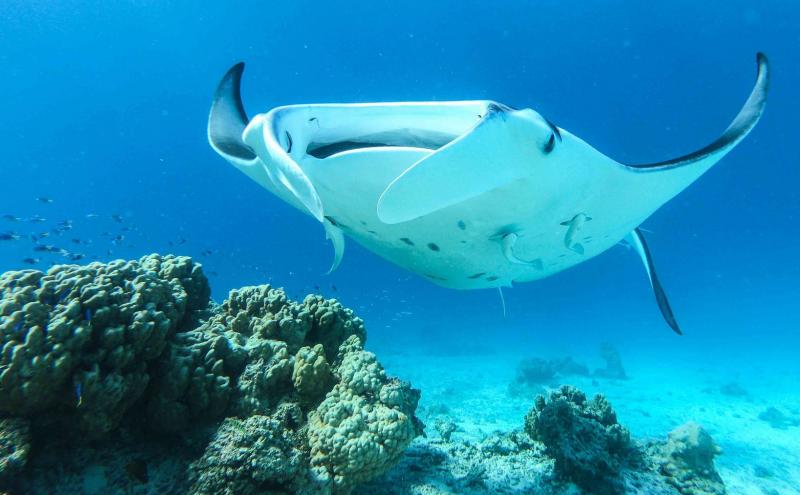
- Continued from Hidden Hits of French Polynesia: Nature
Yes, French Polynesia is one of the most beautiful places in the world. But it’s also rich in cultural heritage and history.
In 2003, I explored 11 of the 118 islands of French Polynesia by 30-foot sailboat and lived to provide this advice on off-the-beaten path spots that reflect the special culture of Polynesia.
If you’re not up for a 12,000 mile sail via Central America, there’s now a much easier way to get there. Two direct flights from Seattle-Tacoma International Airport (SEA) on Air Tahiti Nui that leave twice a week!
- See the Air Tahiti Nui flight schedule
This is my to do list for my next return without a sailboat.
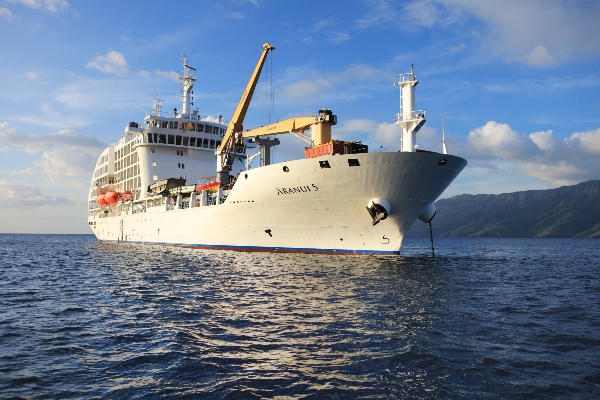
1. Cruise a freighter through paradise
All islands
I have a lifelong fascinating with freighters, and maybe that's why I work at the Port. During my three month stay, the Aranui freighter ship was a daily sight while it delivered everyday supplies to the populated islands. You can join for a 12 day cruise through the islands to the Marquesas, or take a specific itinerary. And returning to Papeete, Tahiti transporting the most important agricultural commodities of the region: copra, lemons, fish, and barrels of Noni.
Copra – the sun-dried white flesh of the coconut is a primary ingredient in the cosmetics industry to produce things like makeup and soap. And it's a primary export of French Polynesia.
Noni — a wrinkly, dimply green fruit that grows on an evergreen shrub and smells like stinky cheese when fermented. Noni is one of the important agricultural exports and has been touted as dietary supplement and a superfood, with curative and anti-inflammatory properties.
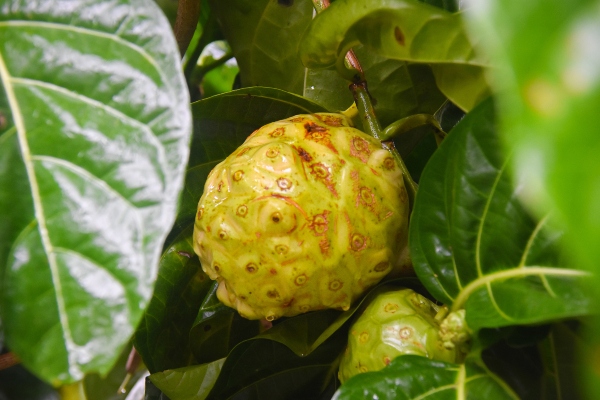
This is the voyage less travelled, offering cultural immersion in the heart and soul of Polynesia. With the comforts and conveniences of a boutique cruise ship. The freighter has been sailing these waters for more than six decades. But the newest custom-built freighter, Aranui 5, was commissioned in 2015 and holds 230 passengers plus freight.
It’s the most authentic way to visit the islands as the staff, crew, and on-shore guides know these islands, have grown up here, and are pleased to share their culture, food, music, and hospitality with visitors. The concept is to show you the daily rhythms, culture, and most significant places by land and sea.
The concept of Aranui Polynesian Cruises has remained the same: a traditional and authentic Polynesian offering by Polynesians for the benefit of Polynesia. In that spirit, nearly all the staff and crew are Polynesian, hailing from islands across the five archipelagos. It is their insider’s perspective and how openly they introduce their home to the outside world that creates an atmosphere unlike any other cruise line sailing these waters.
(source: Aranui website)
- Read more about Aranui voyages
Recommended reading:
Headhunters on my Doorstep: A True Treasure Island Ghost Story
By J. Maarten Troost
A hilarious account of my favorite travel writer’s voyage on the Aranui III following in the path of Robert Louis Stevenson.
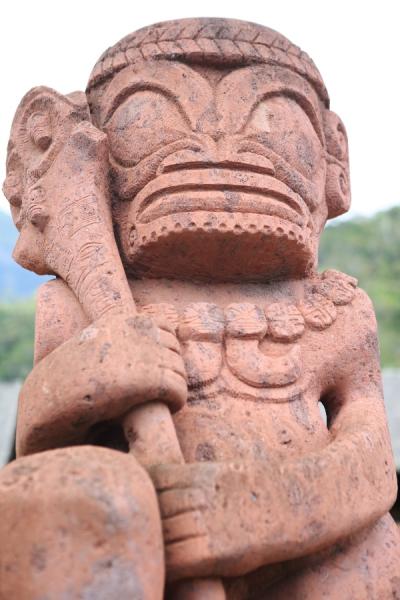
2. Meet ancient tikis
Nuku Hiva and Hiva Oa, Marquesas Islands
Tahiti Iti, Tahiti, Society Islands
Tikis, sculptures of half-human and half-god, play a significant role in Polynesian culture. They are usually found near the marae, a sacred site, and can represent concepts like power, virtue, prosperity, and wisdom.
- Learn the history and significance of tikis from Moana Voyages
Tikis are prevalent throughout French Polynesia, but some of the most significant and historic tikis are found in the Marquesas.
Nuku Hiva
The Marquesas are living history and culture. This quiet island is the most populated and the first stop for sailboats crossing the Pacific. And it’s worth the 3.5 hour flight from Papeete by Air Tahiti, the airline for inter-island travel.
- Paul Gauguin lived on Nuku Hiva at the end of his life and is buried near Belgian singer Jacques Brel in a quiet cemetery overlooking the ocean
- Visit the tallest (250 feet) waterfall in French Polynesia
- A short hike to the top of Mount Moake will reveal Tiki Tuhiva, the largest tiki in Polynesia (40 feet tall) depicting a female tiki being protected by a male warrior
- Surrounded by lush vegetation and giant banyan trees, another sacred site is called Tohua Koueva. With an ancient stone platform (paepae) and some of the most historic tikis in the islands
Recommended reading:
- Points and Travel’s recap of Nuku Hiva
- Typee, by Herman Melville
From Tahiti Tourisme:
Author Herman Melville wrote his novel Typee in 1846 after being influenced by his adventures in the Taipivai Valley. In the novel, he tells the story of a sailor who stumbles upon a seemingly uninhabited island. He wandered The Marquesas Islands, lonely and fearful of cannibals, who he’d heard roamed the island. Finally, he was discovered by the Taipi clan, who surprisingly welcomed him with open arms. He became the first European ever to come into contact with this secluded community on this remote island in the South Pacific. Herman Melville reveals that this sailor was him, and he returned from French Polynesia to tell his story. This tale became Melville’s most famous novel during his lifetime.
Hiva Oa
The island of Hiva Oa has the motherlode of historic tikis, including the largest tiki statue in French Polynesia. “Takaii” is 8 feet tall and is a happy-looking statue hidden among the thick trees.
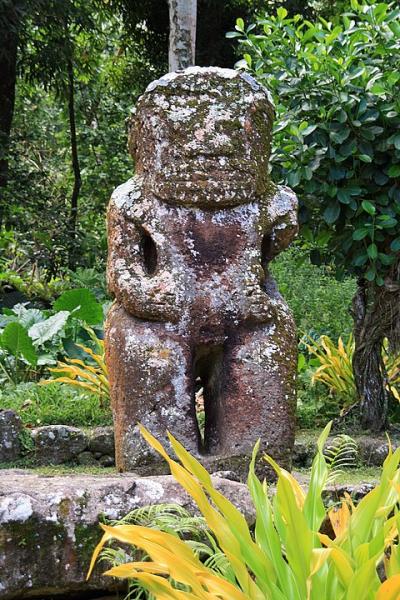
Another tiki, Tiki Makii Tau'a Pepe, that was created before the Marquesas were visited by Europeans, is thought to depict a woman giving birth.
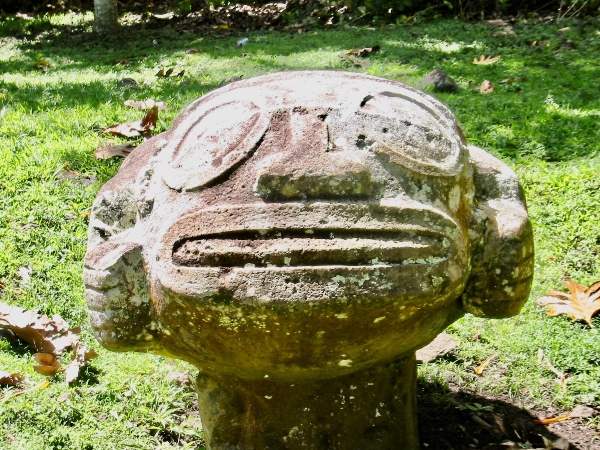
- Meet the tikis of Hiva Oa, from the Aranui website
Tahiti Iti
Most travelers land on the island of Tahiti but there’s much more than the airport and the downtown area of Papeete. Tahiti iti is a small peninsula on the south end that it feels like a world away from the bustling city center of Papeete. Rent a car, drive the coastline, and visit a historic mar’ae (temple or sacred spot). The Marae Arahurahu is the only restored (and one of the best) in French Polynesia
Recommended reading:
- Learn about the heritage and culture of the Marquesas from the Hokulea site to preserve the traditions of Polynesian voyaging.
- Read the history of Tahiti and its people
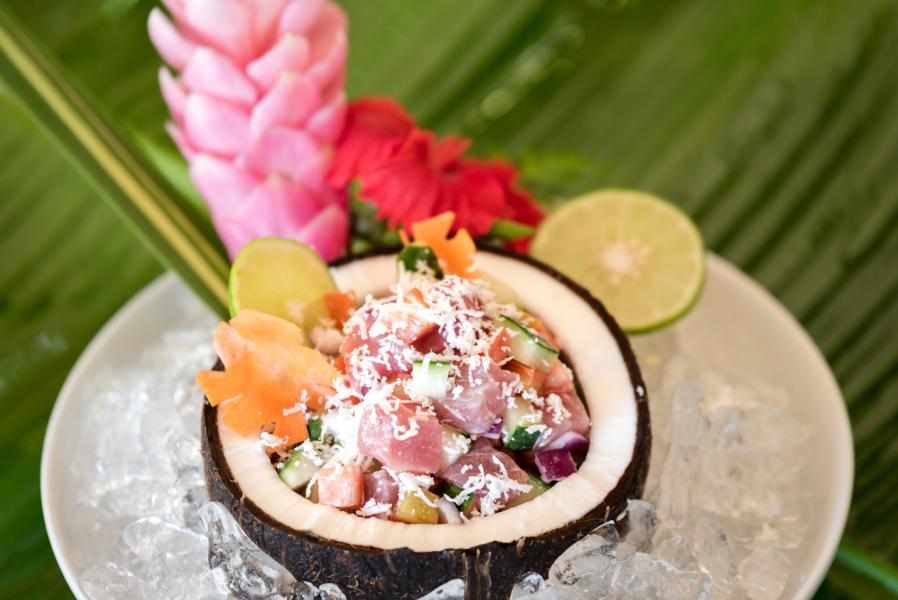
3. Mange like a local
Support the local producers and makers and have a memorable meal outside a five star resort.
If you’re a fan of Seattle’s robust food truck scene, you will appreciate the upscale adventure of the roulottes, the food trucks of Papeete. Cheaper than dining in restaurants in town, they can be a culinary adventure with an assortment of cuisine including French, Polynesian, Chinese. The roulottes park on the waterfront (at Place Vai’ete) with lights, local music, tablecloths and chairs, and delicious local flavors.
Poisson cru
One dish you will find everywhere (and should not miss) is Poisson cru, (“raw fish” in French, “ and "ia ota" by the locals), and it’s a delicious contender for the national dish. Similar to ceviche or poke — it’s the freshest catch, cured in lime juice and kissed with coconut milk and aromatics like onions. Another delicious variation is Poisson cru à la chinoise, a sweet and sour Asian-inspired version without the coconut milk flavored with soy sauce, sesame sauce, and ginger. My favorite recipes contained small slivers of candied ginger.
- Here’s a recipe for traditional poisson cru (for when you can’t live without it when you return home — I told you so).
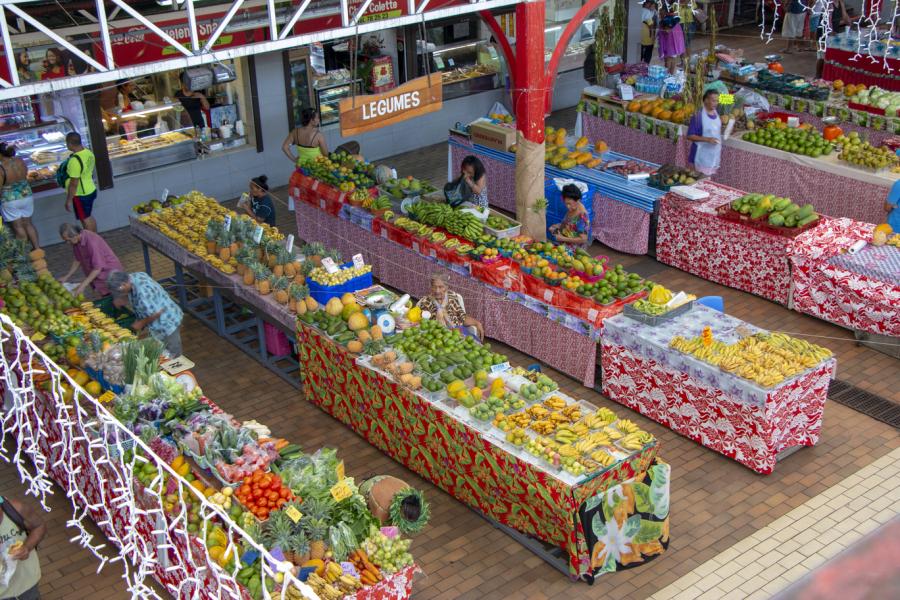
4. Support the local makers
Visit the Municipal Market or Le Marché in Papeete (Island of Tahiti), housed in a historic two story building that’s 155 years old.
While you’re there, support the local makers and industries and pick up thoughtful souvenirs at the historic two story Municipal Market. It’s a farmer’s market on steroids with local crafts, the local catch of fish, and a riot of color from the gorgeous textiles.
Pick up the best:
- Tahitian black pearls — unique and reasonably-priced pearls in gorgeous opalescent colors of black, silvers, greys, purples, and greens
- Pareu — beautiful vibrant sarongs decorated with images of breadfruit, tiare flowers, waves, and marine life
- Monoi — this delightfully scented coconut oil contains a fragrant tiare flower (Tahitian ginger) in each bottle and is a rich moisturizer for your skin and hair. It’s quintessentially Tahitian and 20 years later I still can’t live without it. There’s even a citronella-scented version to repel the savage no nos (noseeum biting gnats) that savaged me on a beach without me knowing it. It took two days of Benadryl and socks on my hands to get through the itching.
- Vanilla — last stop to purchase Tahitian vanilla beans and products
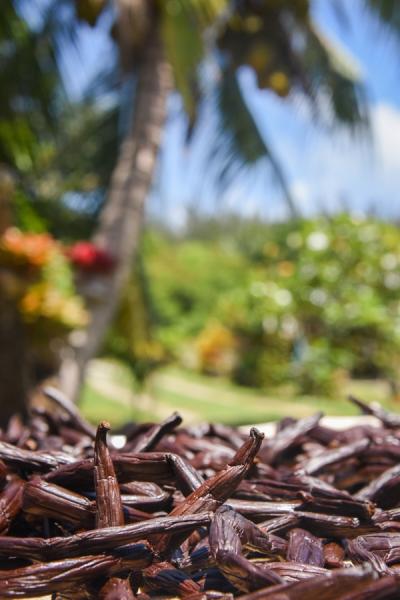
5. Make your life less vanilla with life-changing vanilla
Before I visited Tahiti, I was a chocolate-only connoisseur. White chocolate? A waste of calories. Vanilla ice cream? Meh.
Visiting a vanilla farm on the island of Taha’a and tasting real Tahitian Vanilla, a member of the orchid family, suddenly changed that. I’m a reformed vanillaphile and high-maintenance flavoring snob who now finds a way to infuse everything, even my latte, with Tahitian vanilla.
More than 70% of the vanilla grown in Tahiti comes from the island of Taha’a, a beautiful, quiet island accessed by boat or seaplane and well worth a visit.
Tahiti Tourisme does a great job of describing how the environment and the growing process produces the best vanilla in the world:
“Tasting Tahitian vanilla is a different experience entirely. It is extremely complex and is used in Tahitian cooking for not only sweet confections but also savory dishes. Tahitian vanilla extract is luxurious, intensely aromatic, exotic and even sensual. The flavor profile has notes of sweetness, cherry, and spice.
Lacking in depth and sophistication, most artificial vanilla is made from a synthetic version of a natural compound called vanillin, a chemical that can be found in wood pulp, which bears no resemblance to the fragrant, juicy Tahitian vanilla beans of French Polynesia. Once you understand what it takes to produce even a single Tahitian vanilla bean, you will understand why it is the second most costly and valuable spice in the world — second only to saffron.”
(Source: Tahitian Vanilla, the Flavor of Paradise, Tahiti Tourisme)We all know vanilla as a sweet treat, but I was surprised to find that it can be a delicious and savory pairing with fish. I’m solidly in the “don’t put milk or cheese or PLEASE no mayonnaise on my fish” camp, but I will always make an exception for this exceptional recipe:
Seared Mahi Mahi with Tahitian Vanilla Sauce
With a sauce of coconut milk, rum, cream, Tahitian vanilla beans, and chicken stock
Recommended reading:
Vanilla: The Cultural History of the World's Favorite Flavor and Fragrance
By Patricia Rain
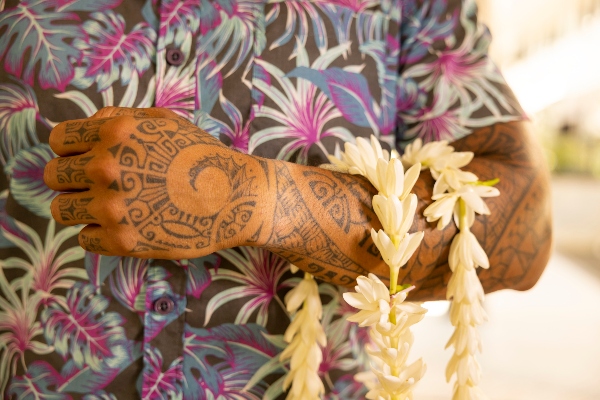
6. Tell your story through a tattoo
They say In Polynesia, particularly the Marquesas, tattoos are more than skin deep. They are visual aids to tell a person’s story and heritage.
The art of tattooing has been (and still is) widely practiced in French Polynesia particularly the Marquesas Islands, where tattoos are known for vibrant, intricate designs and themes. It’s not uncommon to see people tattooed from head to toe on one side of their body with beautiful blackwork.
Common elements of Polynesian tattoos are geometric patterns and pictographs that convey meaning. For instance, the turtle means that you have come from a distant place. And there’s a language and meaning to every tattoo and where it’s placed on your body.
Tattoos convey important information about the wearer, kind of like social media profiles on your skin:
A tattoo placement above the waist indicates that the design is related to someone’s spiritual nature or the heavens. If the tattoo is below the waist, then it goes down into the earth.
In ancient times, you could distinguish the social class of the tattooed subject, as some were intended for gods, others for priests and still more for ari’i. The hui ari’i type is reserved for chiefs, whereas those of the hui to’a, hui ra’atira and ‘īato’ai, and manahune types are seen on war leaders, warriors, dancers, rowers and people of similar classes.
(Source: Tattoos, Tahiti Tourisme)
There’s a language and meaning to tattoo symbols:
- fish hook (prosperity)
- chasing birds (support to the loved ones)
- stepping stones (achievements, lessons)
- adze (skills, hard work)
- shark teeth (adaptability, protection)
- sun (success, joy)
- waves (change)
- mountains (stability)
In fact, the Air Tahiti Nui planes depict traditional tattoo art on their plane livery.
- Read an article from Simple Flying on the meaning behind the symbols on the livery.
Suggested reading:
- “Tattooes are more than skin Deep”, from National Geographic Magazine
- Read about the origins and meaning of Polynesian tattoos from Tahiti Tourisme
- Learn about Polynesian tattoo symbols from The Tattoo Tribe
Top photo credit: copyright Holger Leue


